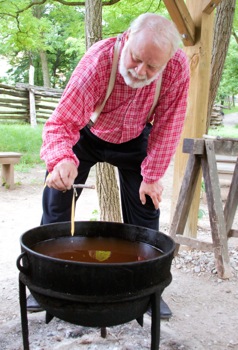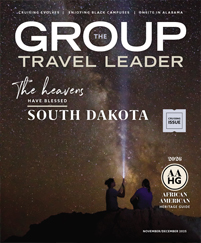
Interpreters at Conner Prairie, the living-history complex near Indianapolis, had immersed themselves in the roles of residents of the 1836 village Prairietown for a quarter century.
“We thought we were good at it, but research in the year 2000 found that people were not really engaged in the experience,” said Dan Freas, vice president of guest experience. “They were bystanders in the process. We discovered that families would leave and then try to make sense of what they had just encountered. They didn’t develop rapport with the staff.
“So, we came up with a new approach.”
Freas said they found that the interpreters were largely reciting scripts and relaying information instead of interacting with visitors.
The new approach, called Opening Doors, still keeps the interpreters in first person, acting as if they were in 1836, but “we threw out the scripts,” said Freas, “and the list of facts and information they were expected to present.
“We let our guests direct this whole process. We listen to them and find out what they are interested in, what they are there for, and mold the interpretation around these individual interests.
“It made a huge difference,” he said.
The program was so successful that Conner Prairie received a federal grant to make training videos for other museums.
However, the experience was different at Historic Fort Snelling in Minneapolis.
“We operate on the third-person basis,” said site manager Tom Pfannenstiel. “We moved away from strict first person about four years ago. Up to that time, it was strictly 1820 for a couple of decades.”
Pfannenstiel said the site, operated by the Minnesota Historical Society, made the change for a couple of reasons.
“The time period is fairly broad and deep, and we found that the visiting public was not engaging with our program and staff.
“This allows our staff to talk about a number of topics, from Indian treaties to the Civil War to the world wars to the buildings across the way that are boarded up but were used during World War II.”
The approaches seem to work well at the two sites, and many other living-history sites in the Heartland use a combination of first and third person.
For more America’s heartland:
History thrives
Cuisine that makes it good to be hungry
Agritourism’s harvest
Get hip to the urban heartland
Elkhart County’s Amish haystack
Agritourism on the cusp of suburbia
Tasting the Old World









